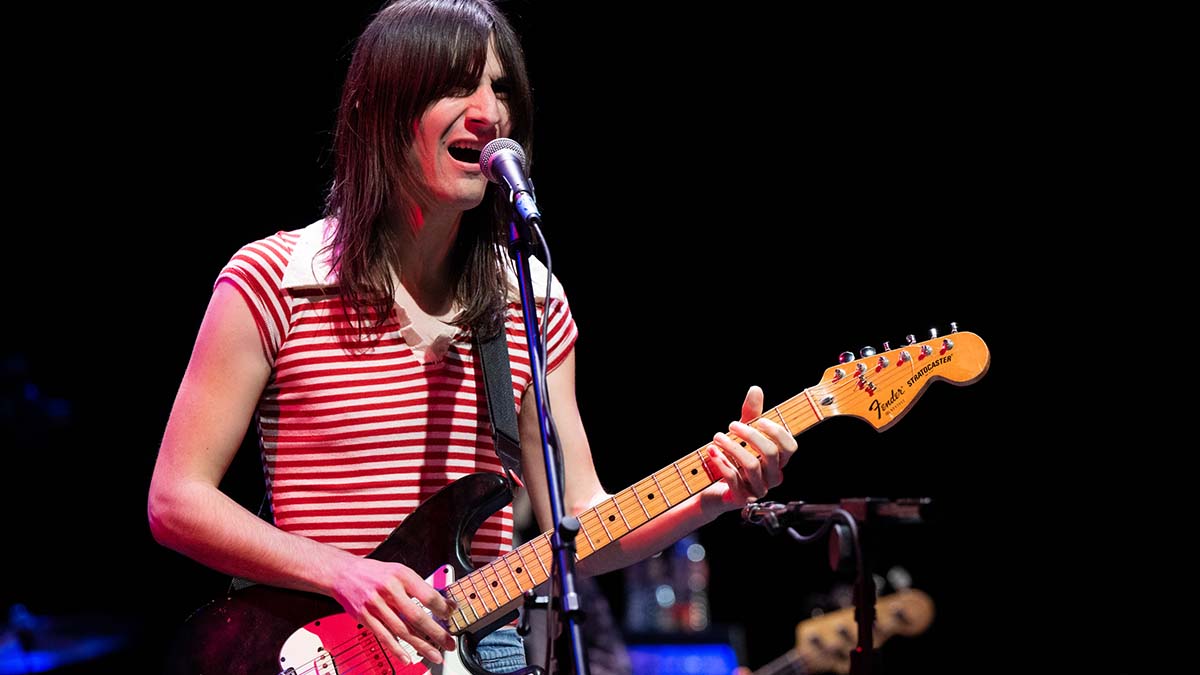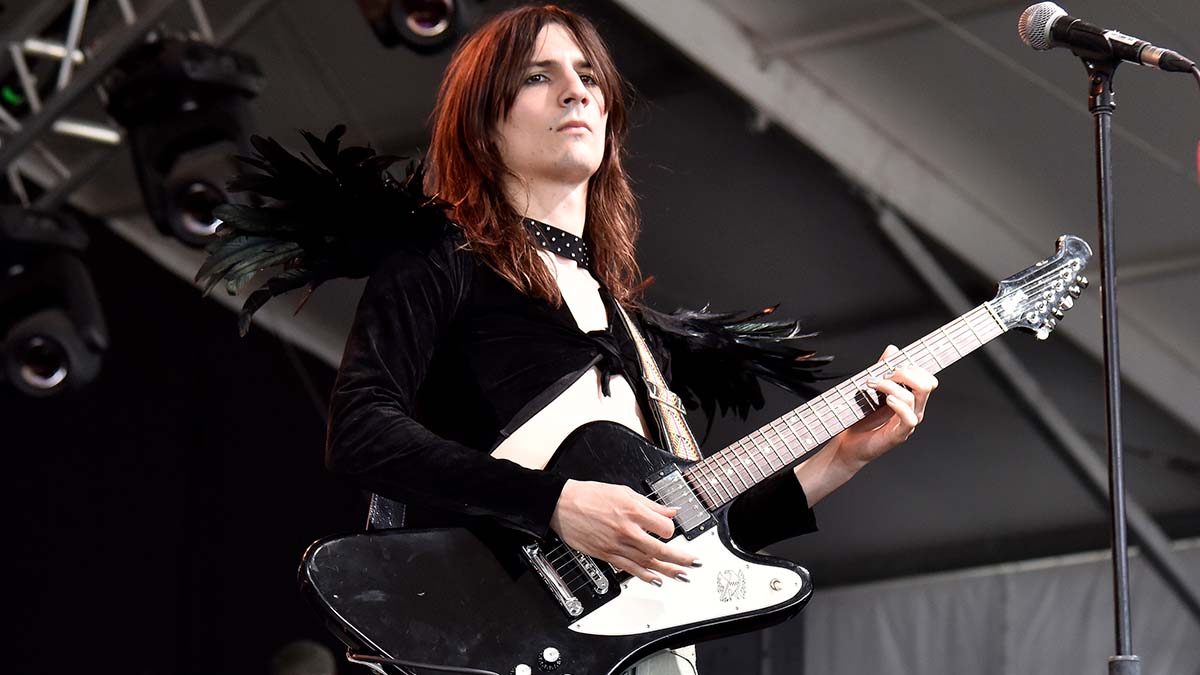
They could be considered the vanguard of a ’70s glam rock revival, but everyone’s favourite New York brother-band The Lemon Twigs are exploring a more contemplative and stripped-back sound on their fourth full-length, Everything Harmony. Full of rich vocal harmonies and subtle fingerpicked guitar lines, the band’s bold change of pace has resulted in some of their finest work to date.
“The sound came during the demoing process,” says Brian D’Addario, who shares vocal, guitar, bass, drum and production duties with his brother Michael. “The songs that stood out were the songs that were more vulnerable. That was a mood that we got into that continued until the whole album was written. We wrote a lot of frivolous pop at the time as well, which we love, but it just felt wrong to put them alongside the other songs.”
The brothers’ quest to refine their sound found them taking in a wider range of influences than ever before, including the late cellist and composer Arthur Russell, and his 2019 compilation album Iowa Dream.
“We played that to death,” says Brian. “A lot of those recordings were made in a demo form, and you just get a sense of his completely unique identity as a songwriter and a melodist, and that’s what we wanted to capture on our record – what our identities are as writers, not just an audition reel of all these different styles we’re interested in.”
Speaking from his apartment in Brooklyn, Brian discusses his appreciation for classical guitar, his newfound love of Rickenbacker 12-string guitars and his formative years as a surprise My Chemical Romance super-fan…
You’re from a musical family. What age did you start playing the guitar?
“I was around seven, and I remember The Beatles’ Love Me Do was the first thing my dad taught me – which uses these one-finger chords – probably on a very small nylon-string guitar. I think I started writing songs around that time, with one‑finger chords.”
Did seeing instruments around the house make you want to learn how to play them?
“Yeah. I’d get real frustrated not knowing how to play instruments, so my dad would just show me a few things here and there. It was something that Michael and I took to intensely.”
My initial guitar heroes were Pete Townshend, Jimi Hendrix, George Harrison – people like that. And when I discovered Tom Verlaine, that was a whole new way of approaching a solo
Do you remember the first guitar you owned?
“I got this Johnson tiny-scale – I’m not even sure what you’d call it, but it was meant for kids – higher-tuned Strat copy. That was the first guitar that was my own; it was perfect for my size.”
Did Michael and yourself begin performing together right from the start?
“We started with me playing guitar and Michael playing drums – we were always playing together. We always knew that it was going to be us in a band together. Over the years, I think we both flirted with doing stuff on our own, but it’s never been something that we thought would be as good or as enjoyable to do.”
Did you ever use to fight over who was in the spotlight?
“I think as soon as Michael started playing guitar and writing his own songs I was happy to give up some of the spotlight to him. But it was always the kind of thing where people would watch him from the drums and he would sing songs from the drums.
“So as soon as I got a chance to play drums on stage, I really took to that because that was something I wasn’t allowed to do when I was a kid. My mum would say, ‘Well, Michael’s the drummer.’ So I was happy to start sharing different roles.”
You posted a video on social media of your teenage band covering My Chemical Romance back in 2010. What’s the story there?
“That was shot in our parents’ backyard. There was a cover contest that MCR did on their website, and we entered about three or four different covers. When we played with them last year it was really cool to see them, and the songs were still very strong. When we first got into other music we kind of turned our backs on that whole genre, but you get a real sense of the songs and how good they are when you see them live.”
Who were your guitar heroes growing up?
“Well, Ray Toro [of MCR] was a big hero when I was learning to play stuff, and he did things technically that I learned note-for-note that really helped me play fast. But my initial guitar heroes were Pete Townshend, Jimi Hendrix, George Harrison– people like that. And when I discovered Tom Verlaine, that was a whole new way of approaching a solo. Robbie Robertson was also a big one, and Richard Thompson had incredible style.”
Many of the tracks on Everything Harmony feature acoustic fingerpicking. Was this something you had to brush up on or was it already in your wheelhouse?
“It’s how I write on guitar, generally – I play the melody first before I start singing. There weren’t a lot of fingerpicking parts that were written after the fact. I played classical guitar for a while, and so when I play classical it helps me brush up on all the other stuff that I play.
“I would definitely advise people to try classical because you get introduced to all these different chord shapes, even in the simplest pieces that you’ll learn. So it’s really easy to translate classical chord shapes to pop music.”
Every Day Is The Worst Day Of My Life is probably the most stripped-back you’ve sounded.
“That was Michael’s tune. As soon as he made the demo he was like, ‘This is the version,’ and I was pushing us to re-record it with drums and stuff. But when we were tracking it again it didn’t feel right, especially doing the vocals again. It’s always really hard to recapture that feeling you get when you record a song for the first time and you’re super excited about it. So we just left it, and I’m really happy with it.”
What guitars were you using for the acoustic parts?
“There’s this classical guitar that I got in LA at a shop and it was made by the store owner’s grandfather, and there was a Gurian, which was my brother’s. We saw Paul Simon play one; they’re made by New York-based luthier Michael Gurian.”
What about for the electric guitars?
“There was a Rickenbacker 12-string that we used, a ’77 black Strat and a knock-off Hofner bass that belonged to the engineer, and we mainly used natural distortion from a Fender Twin Reverb.”

You’re known to play Fenders and Gibsons. What is it about these classic brands that you love so much? The sound, the aesthetic?
“Oh, both. We’re getting more into playing 12-string now. There’s a Gretsch 12-string that we like a lot, and the Rickenbacker 12-string. But the Strat sound mainly has been the most inspiring sound to work with for us. I guess it’s sort of power-pop lineage, [The Beatles’ 1965 classic] Nowhere Man being the first guitar sound that I really locked into. It’s always inspiring to come up with a part on a Strat.”
The track What You Were Doing features a great solo towards the end.
“That was an improvised solo, done thinking that we were gonna fade the song out way earlier. It was really spontaneous, I was just fooling around and that’s probably why it came out sounding free. It’s pretty Television-inspired. The first half is the first take and the second half is the last take.
Another highlight is Ghost Run Free. What are we hearing in the outro?
“Everything was recorded with this TC Electronic chorus pedal that we loved, and then after we did some real flanging by taking the whole track and putting it into our Roland Space Echo and messing with the speed.
“We did that a few times and we used our Eventide H3000 [Harmonizer] that has some digital phasing and flanging effects, and we put the whole track through that a couple times and tried to find some nice, sweeping sounds that we could do some stereo effects with.
“That was pretty inspired by a particular Roxy Music song, In Every Dream Home A Heartache [from 1973’s For Your Pleasure], where the whole end of the song is this really epic, totally phased‑out thing.”
As multi-instrumentalists, do you ever think, ‘This song just flat-out doesn’t need a guitar’?
“Definitely. The most important thing is how you initially track the song. We’ll always track with Michael on drums and me on guitar, or vice versa, and we’ll try to get something that we keep. We don’t record a guide track.
“Whatever is supposed to be most prominent in the song is what we’ll record first, so I’ll try to get a good guitar arrangement that I want people to pay attention to when we’re initially tracking. That way, everything else that’s paired with it is working around that instrument.”
Finally, are there any holy grail items of gear you’re still after?
“Just Rickenbackers, I think. Different kinds of Ricks. Michael, I know, especially wants the Roger McGuinn blonde Rick, but a six-string version. And I would say the same!”
- Everything Harmony is out now via Captured Tracks.







